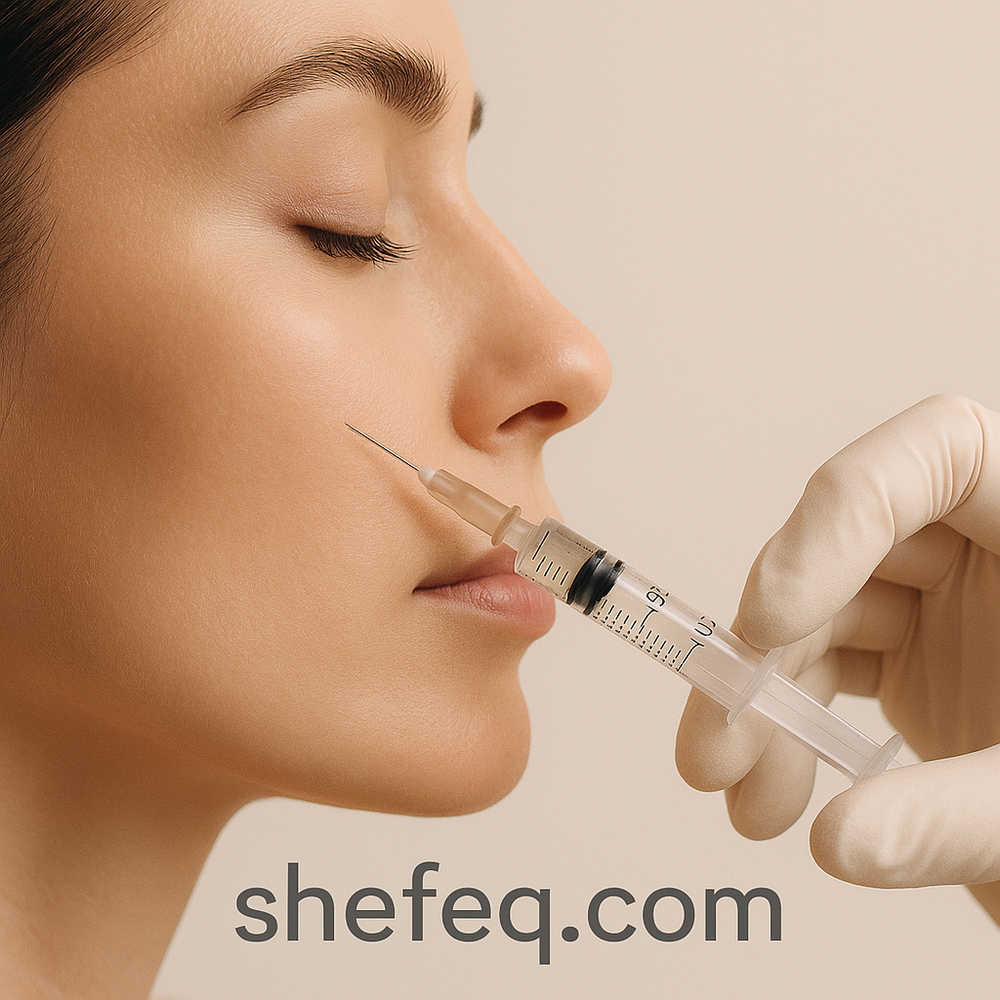Introduction: Beauty doesn’t just want water, it needs life
Every woman has a moment—she looks in the mirror and sees a trace of fatigue in her eyes, a dullness in her skin. She’s not necessarily old, but her skin is quietly asking for “water.” However, this water doesn’t come from a drinking glass. When skin is dehydrated, it needs moisture from within. That’s when the concept of biorevitalization appears—the return of life to the skin through a needle.
This article explores what biorevitalization is, how it’s applied, who it’s suitable for, what results it offers, and all the details of the procedure from scientific, social, and practical perspectives.
I. What is biorevitalization? – Explained simply
Biorevitalization is the process of restoring the skin’s natural moisture, elasticity, and glow by injecting hyaluronic acid beneath the skin.
-
“Bio” means life
-
“Revitalization” means to bring back vitality
→ “Bringing the skin back to life.”
During this procedure, biologically compatible and safe ingredients are injected into the skin using ultra-fine needles. The main component is hyaluronic acid, which naturally exists in the skin but decreases with age. It retains water, keeping skin radiant, smooth, and alive.
II. Detailed Procedure: How is it done?
Preparation phase:
-
The doctor evaluates skin condition: wrinkles, dryness, loss of elasticity.
-
Photos may be taken to compare results later.
-
The skin is cleansed from makeup, oil, and dirt.
-
Anesthetic cream is applied to numb the area.
Injection process:
-
Small doses (0.01–0.03 ml) of hyaluronic acid are injected 2–4 mm under the skin with very fine needles.
-
The injections are applied point-by-point across the face: forehead, cheeks, under the eyes, chin, and neck.
-
Sometimes hands and décolleté areas are included.
Duration:
-
About 20–30 minutes; with preparation, around 1 hour.
Number of sessions:
-
3–4 sessions spaced 15–20 days apart.
-
Then, once a year for maintenance.
Important: Always performed by a certified specialist with quality products.
III. Composition and Mechanism: How does the skin respond?
Main ingredient: Non-stabilized Hyaluronic Acid
-
Retains up to 1000 times its weight in water
-
Stimulates cell metabolism
-
Increases collagen and elastin production
-
Improves microcirculation
Other beneficial ingredients:
| Component | Benefit |
|---|---|
| Vitamin C | Evens skin tone, reduces pigmentation |
| Vitamin E | Antioxidant, protects cells |
| Amino Acids | Strengthen collagen synthesis |
| Nucleotides (DNA-RNA) | Stimulate cellular regeneration |
IV. Effects of Biorevitalization
Positive effects:
-
Skin appears more radiant and plump
-
Fine lines are smoothed, under-eye darkness fades
-
Moisture balance is restored
-
Subtle lifting effect
-
Makeup applies better
-
Face looks more rested and healthy
V. Who is it suitable for, and when should it be done?
Suitable for:
-
Anyone over 25 years old
-
At the appearance of the first fine lines
-
Skin damaged by sun, stress, smoking
-
Dry or dehydrated skin
-
Before or after surgery or laser treatments
Not suitable for:
-
Pregnant or breastfeeding women
-
Active acne, herpes, or skin infections
-
During autoimmune diseases
-
Allergy to hyaluronic acid
VI. How does it differ from Botox?
| Feature | Biorevitalization | Botox |
|---|---|---|
| Purpose | Moisturize, rejuvenate | Paralyze muscle activity |
| Target area | Skin layer | Muscle layers |
| Facial expressions | Maintained | Reduced |
| Age target | 25–45 | 30+ |
| Natural appearance | Very natural | Can sometimes look artificial |
Best result: Start with biorevitalization, add Botox if needed.
VII. Aftercare (What to watch at home)
Do:
-
Avoid touching your skin for 24 hours
-
Use sunscreen
-
Drink plenty of water
-
Delay makeup for 1 day
-
Avoid spa, sauna, bathhouse for 3 days
Avoid:
-
Alcohol (can worsen redness)
-
Intense physical activity (sweating increases infection risk)
-
Facial massage or pressure (can increase swelling)
VIII. How long does the effect last?
-
Initial results: 3–5 days
-
Full effect: 2–3 weeks
-
Maintenance: 1–2 times a year
-
Duration: 6 months to 1 year
IX. Social Perspective and Female Perception
Biorevitalization is more than a cosmetic procedure. It’s a way to practice self-love, value yourself, and preserve the beauty that comes from within.
Many women report wearing less makeup, smiling more, and feeling stronger and happier after the procedure. It also offers psychological comfort—because the reflection in the mirror looks more alive.
X. Frequently Asked Questions
-
Is it painful?
– There is a slight pricking sensation, but it’s minimized with anesthetic cream. -
Will the skin swell?
– Yes, small bumps may appear right after the procedure. They subside within 1–2 days. -
Is it addictive?
– No. As the effect fades, the skin gradually returns to its previous state. -
Can it be done at home?
– No. It must be done by a trained physician under sterile conditions.
Conclusion: Beauty is not in the touch, but in the mindset
Biorevitalization is not just about your skin—it’s about your sense of worth.
With hyaluronic acid, you're hydrating not just the body but the soul.
It is a quiet, impactful path to renewal—not only for your appearance, but for your inner balance.
Final thought: Are you ready?
If you want to bring life back to your skin, this procedure is not just a cosmetic shift—it’s the beginning of something new.

